Results 1 to 10 of 10
 13Likes
13Likes
Thread: Sandpaper progression -- Hand sanding
-
11-26-2013, 04:32 PM #1
 Sandpaper progression -- Hand sanding
Sandpaper progression -- Hand sanding
Hey all.
So I'm going to give my try hand sanding without the immediate use of the dremel.
Can you share with me you prefered progressions of sandpaper grit?
Regards,
-
11-26-2013, 05:02 PM #2

depends on what you're sanding. wood: 50 to knock of excess, 80 thorough shape, 120 to feather in overall shape, 180 to finish shaping, 220 to smooth and prep for finishing. g-10 and acrylic or phenolics, 80 to rough 120 to refine, 220 for final shape, 320 smooth, 600, 1200,2000 for polishing out deep scratches, buff with brown Tripoli diamond compound and chrome ox. metal is 220 dry, then wet, 400 dry then wet, 600 wet, 1200 wet, 2000 wet and buff for shine , or stop at 600 and buff with emory and blending bar for brighter satin or stop at emory and for dull satin. hope that helps!
Mastering implies there is nothing more for you to learn of something... I prefer proficient enough to not totally screw it up.
-
-
11-26-2013, 05:08 PM #3

@tiddle,
That was an excellent post. I'm pretty new to this and have a follow easy question for you.
When you say "then wet" for metal, are you actually sanding the blade *in* water or simply periodically wetting the sandpaper?
-
11-26-2013, 05:27 PM #4
-
11-27-2013, 03:35 AM #5

tiddle nice guideline on sanding
-
11-27-2013, 03:46 AM #6

Blade, visible rust, 400, 600, 800, 1000, 1500, 2000, ryobi white compound.
Scales, 180 rough shape, 320 ,then same as blade.
No hand sanding, double sticky back tape on a cork ina reversible drill.
-
11-27-2013, 05:16 AM #7Senior Member




- Join Date
- Feb 2013
- Location
- Haida Gwaii, British Columbia, Canada
- Posts
- 14,395
Thanked: 4821
wet sanding on metal is often done with wd-40 or similar very light oil.
-
11-28-2013, 02:19 PM #8
 Sandpaper progression -- Hand sanding
Sandpaper progression -- Hand sanding
I use wire brush first and then 280grit , 1000, 1500, 2000 basically 500 grit increments all the way to 12000 with micromesh! Then buffing wheel on a drill with white/red compounds ! And i only use water with it! Micromesh is reusable so it will last u a couple of restorations! If u get it... Make sure u ck the dimensions! First time i got the micromesh circles and they are smaller than a quarter! Lol! Get the 2x2 squares
Last edited by robert2286; 11-28-2013 at 02:22 PM.
-
11-28-2013, 02:51 PM #9I used Nakayamas for my house



- Join Date
- Aug 2009
- Location
- Des Moines
- Posts
- 8,664
- Blog Entries
- 1
Thanked: 2591
I start with 400 or 600 depending on the situation.
I use slurry froma natural Japanese stone, but you can also add slurry from synthetic 1k. Adding the slurry makes the sanding effect very even as the sandpaper wears out. Keep using the same piece of sand paper till you are done with that stage. After that, you move to next grit of sand paper, usually 1500 grit. I use 2k slurry with that grit. After those stpes you should have very fine scratches barely visible after you polish with metal polish such as Mothers, Flitz etc.
This one I did hand polish using the described method, no visible scratches on the blade after.

Last edited by mainaman; 11-28-2013 at 02:56 PM.
Stefan
-
11-28-2013, 03:21 PM #10

While I ‘technically’ don’t ‘hand sand’ as I use a palm sander I’ve never used 220 wet and dry, if I have to go ‘low’ I use 320.
I do think that it’s important especially to those who are new to remember that every blade doesn’t have to have a near mirror finish!! It’s sometimes good to leave a little of the Heritage and or Battle Scars!
For instance:
Before:
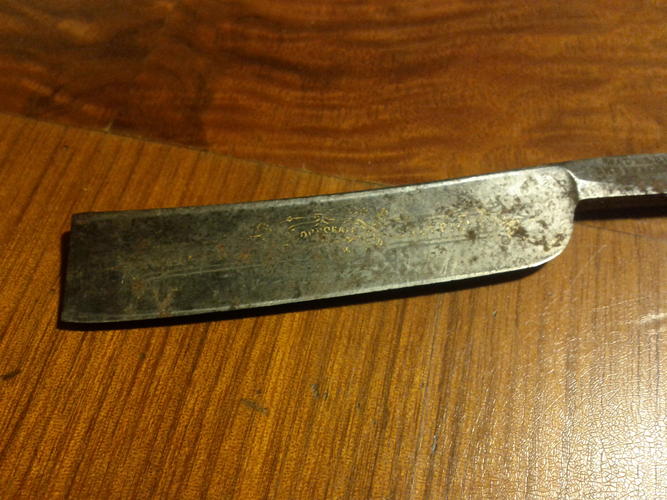
After:
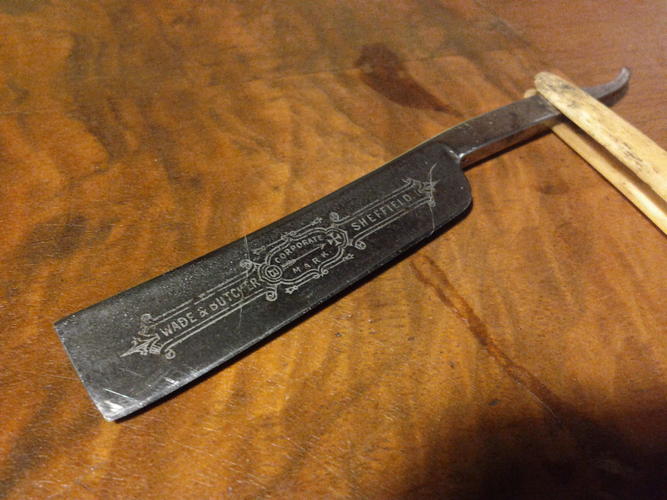
Before:
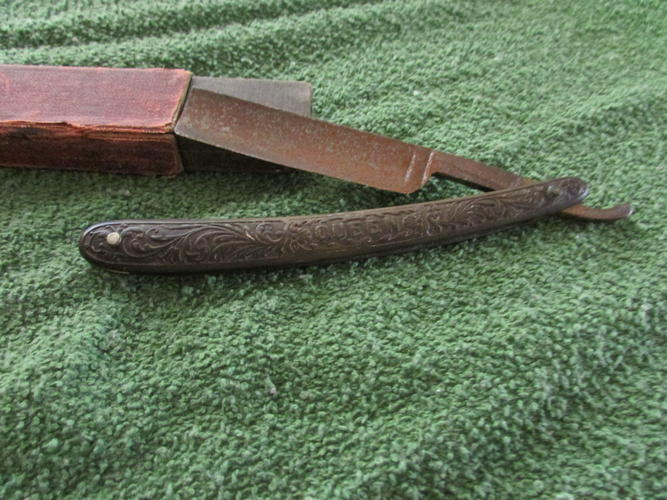
After:
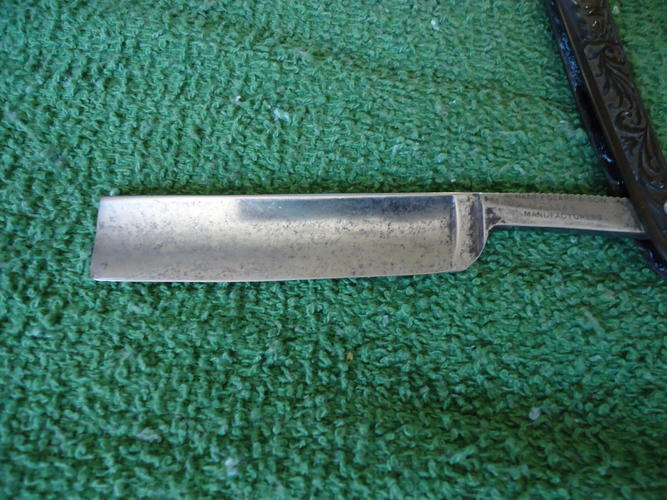
And of course what Glen did for my Great Grandfather's W&B:
Before:
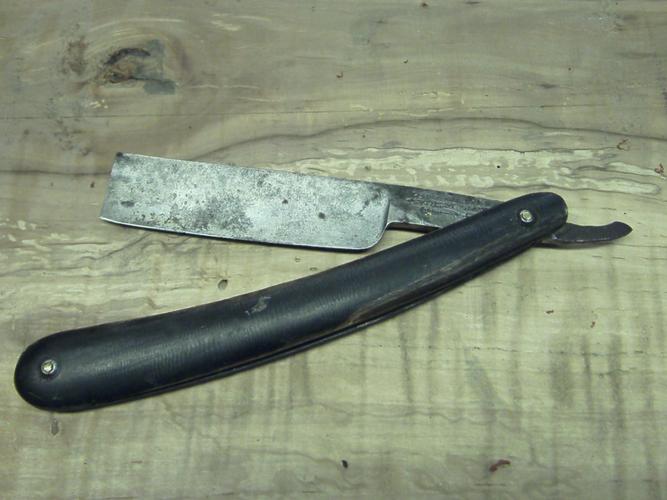
After:
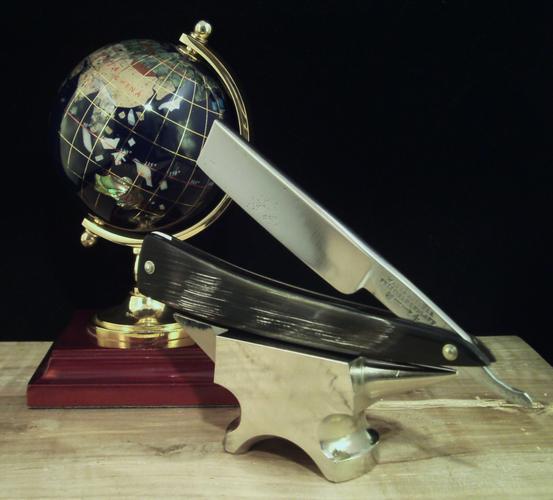
All of the razors are good shavers, they still have a little 'character' to remind that they have survived abuse, neglect and time!!
Enjoy the journey, it's a long strange trip!!Our house is as Neil left it- an Aladdin’s cave of 'stuff'.
Kim X


 LinkBack URL
LinkBack URL About LinkBacks
About LinkBacks






 Reply With Quote
Reply With Quote
